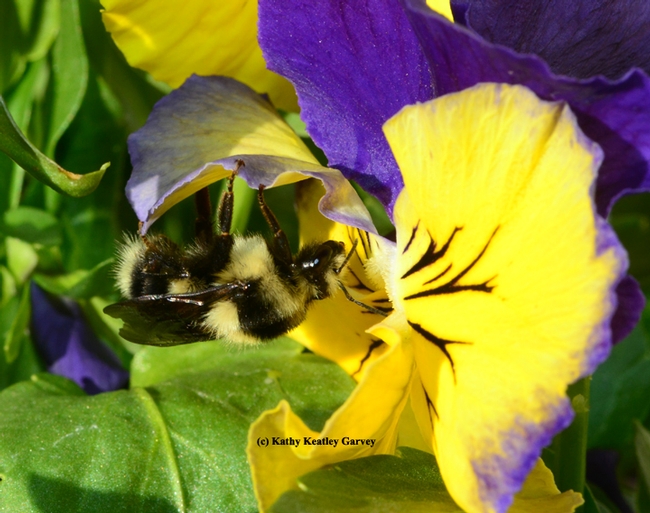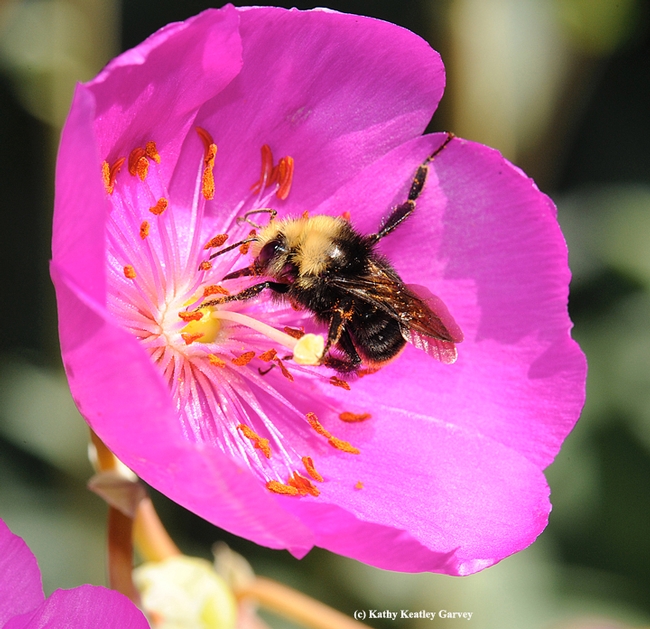Where, oh where, is that first bumble bee of the year?
It's about this time of the year when the queen black-tailed bumble bee, Bombus melanopygus, and the queen yellow-faced bumble bee, Bombus vosnesenskii, emerge.
One of our area readers asked if there's a chart or calendar indicating what time of year the various native bees emerge. One of the best sources is native pollinator specialist Robbin Thorp, distinguished emeritus professor of entomology at the University of California, Davis. (By the way, he's giving a public presentation on native bees at 1:30 p.m., Saturday, Jan. 24 at Solano County's Rush Ranch Nature Center, Suisun City. All interested persons are invited; there's no admission.)
"Each species of bee has its own particular season," Thorp says. "Some start in late winter to early spring, others start late spring, early summer. Some don't fly until fall. Some bees, especially our social bees (honey bees, bumble bees and some sweat bees) fly most of the flowering year (January-February into October-November)."
"It's probably best to frame the bee calendar in context of the bloom of various plants," Thorp points out. "Manzanita is one of the first flowering shrubs and when they come in to bloom that is the time to look for queens of our two early bumble bee species, Bombus melanopygus and B. vosnesenskii. Some of our large digger bees like Habropoda and some Anthophora come on during that bloom. In the vernal pools, early flowering starts in late February and some of our solitary ground nesting mining bees, Andrena start about then. When the red bud comes into bloom about mid-March the Blue Orchard Bee (BOB), some other species of bumble bees, and some sweat bees come out. Leafcutting bees (Megachile) and some long-horned digger bees (Melissodes and Svastra) start their activity about mid-May. "
A great book to learn about native bees and the flowers they visit is the newly published California Bees and Blooms: A Guide for Gardeners and Naturalists (Heyday). It's co-authored by Gordon Frankie, Robbin Thorp, Rollin Coville and Barbara Ertter, all with UC Berkeley connections.
For example, if you look up manzanita (genus Arctostaphylos and family Ericaceae), in California Bees and Blooms, you'll see that there are more than 90 species and subspecies in California, and you'll learn which bees visit them. The authors provide a description of the plant, its origin and natural habitat, its range and use in urban California, its flowering season (late winter to early spring), the resources it provides for bees (pollen and nectar), bee ecology and behavior, and gardening tips.
The book is a treasure.
As are the bees!
Attached Images:

